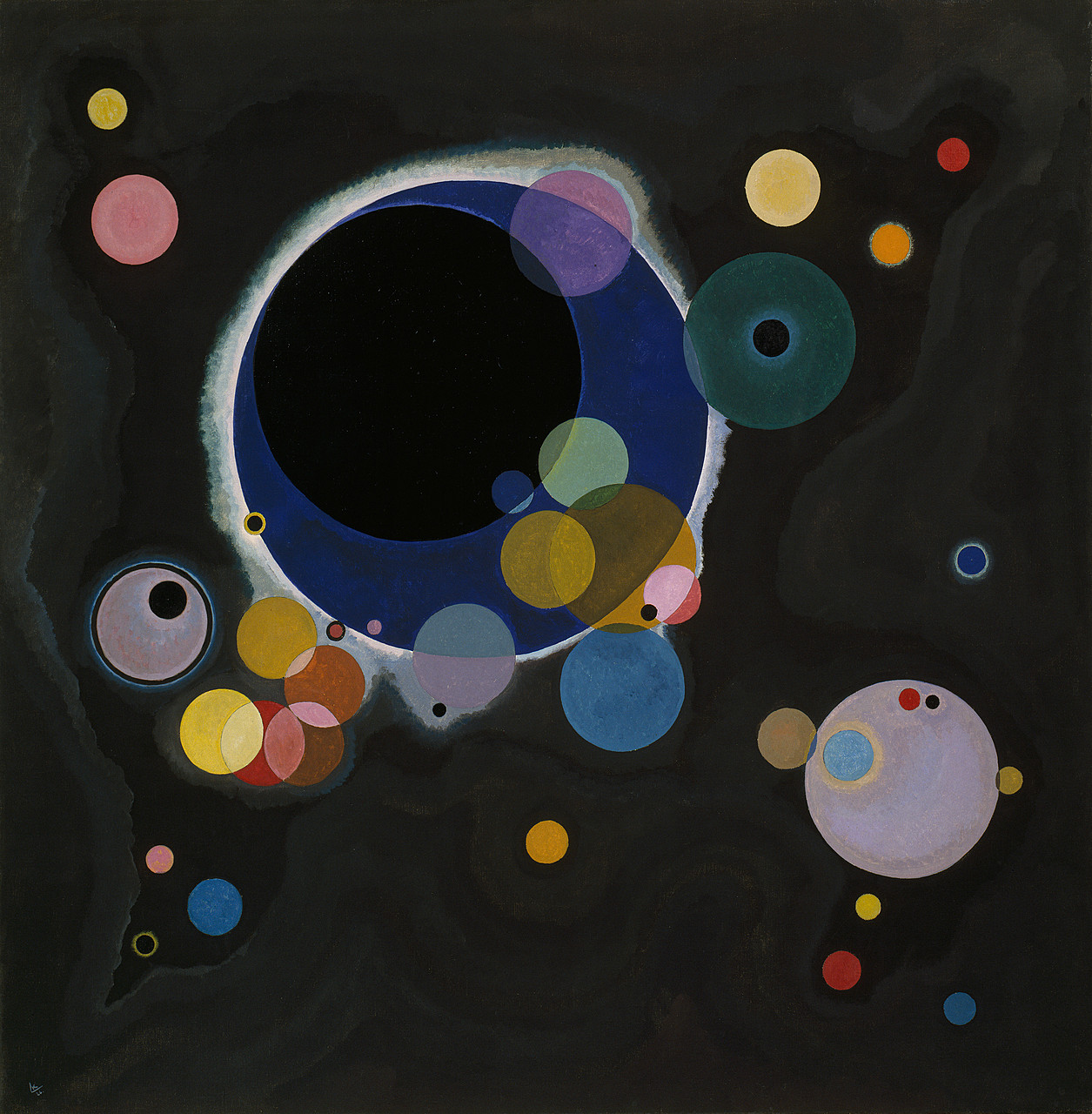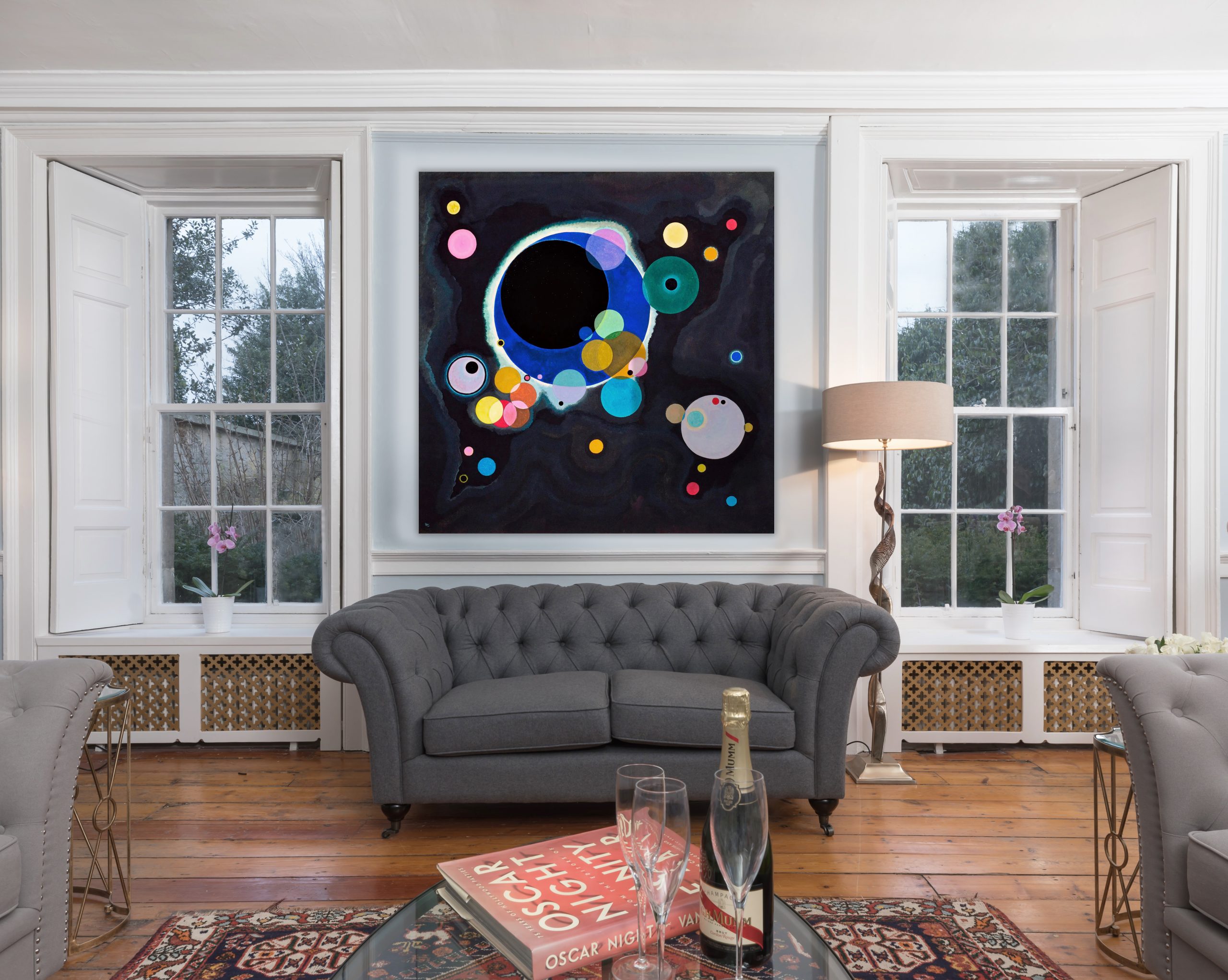Several Circles
Wassily Kandinsky’s Several Circles (1926), measuring 140.7 cm × 140.3 cm and housed at the Solomon R. Guggenheim Museum in New York, is a landmark of Abstract art. Painted during his Bauhaus years, the work arranges vibrant, overlapping circles on a black field, evoking both cosmic space and spiritual harmony. For Kandinsky, the circle symbolized the balance of opposing forces, a perfect union of concentric and eccentric. The interplay of color, size, and placement creates a rhythmic, meditative composition. Several Circles captures Kandinsky’s vision of abstraction as a universal language capable of expressing deep emotional and spiritual truths.
Ratings / Reviews
Información adicional
| Dimensions | Original: 140.7 cm x 140.3 cm, Small: 56.3 cm x 56.1 cm, Medium: 84.4 cm x 84.2 cm, Large: 112.6 cm x 112.2 cm |
|---|
$236.00 – $788.00Price range: $236.00 through $788.00
Wassily Kandinsky’s Several Circles (1926) stands as one of the most refined examples of pure abstraction, created during his tenure at the Bauhaus in Weimar. Measuring 140.7 cm × 140.3 cm and now housed in the Solomon R. Guggenheim Museum in New York, the work embodies Kandinsky’s mature exploration of the expressive and spiritual power of geometry—especially the circle.
Painted in a period when the Bauhaus had shifted toward a more geometric and constructivist aesthetic, Several Circlesreflects Kandinsky’s synthesis of rational structure with his personal commitment to art as a vehicle for inner experience. While inspired by the clean forms championed by Constructivism and Suprematism, Kandinsky infused these shapes with a lyrical dynamism absent from the austere logic of his contemporaries.
In Several Circles, an array of circles in varying sizes and vibrant hues appears suspended over a deep black background. Some circles are opaque, others translucent, overlapping to create new tonal effects. The arrangement is carefully balanced: clusters of circles are juxtaposed with open space, creating a rhythm that alternates between density and calm. Kandinsky described the circle as “the synthesis of the greatest oppositions,” a form that unites the concentric and the eccentric in equilibrium. This cosmic balance is vividly realized in the painting, where the circles seem to float like planets in a vast, infinite expanse.
Color plays a central role. Influenced by Goethe’s color theory and his own earlier writings in Concerning the Spiritual in Art, Kandinsky understood colors as emotional and psychological forces. The circles’ saturated blues, reds, yellows, and purples create contrasts of warmth and coolness, tension and harmony, movement and stillness.
The painting invites multiple interpretations. To some, the arrangement suggests a vision of the cosmos—a celestial map where each circle is a planet in harmonious orbit. To others, it functions as a meditative composition, where pure form and color encourage a contemplative response. For Kandinsky, this ambiguity was essential: abstract art should not dictate meaning, but rather open the door to emotional and spiritual resonance.
As one of the key works of Kandinsky’s Bauhaus years, Several Circles stands as a testament to his ability to merge the precise geometry of modernism with a profound sense of poetic abstraction.


